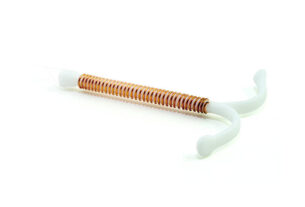The permanent method of preventing pregnancy is called Sterilization. Surgical sterilization includes tubal ligation for women and vasectomy for men. Sterilization should be considered permanent. However sterilization should be considered a permanent procedure, it is possible to attempt a tubal ligation reversal to reconnect fallopian tubes in females or vasectomies are reversed in males. The rate of the success rate depends on the type of sterilization that was originally performed and the damage is done to the tubes as well as patient age.
VASECTOMY
Vasectomy is a surgical procedure of man’s involves blocking the tubes through which sperm pass into the semen. Sperm are produced in a man’s testis and stored in the adjacent structure known as epididymis. During climax of sexual act, the sperm move from the epididymis through a tube called vas deferens and mix with other components of semen to form the ejaculate. All vasectomy techniques involve cutting or obstructing each the left and right deferens, so the man’s semen will no longer contain sperm and he will not be able to make women pregnant
Effectiveness of Vasectomy
Vasectomy is very effective. It has been calculated that only about 15 out of 10000 couples get pregnant during the first year after vasectomy. Although rare, pregnancy is feasible even years after the procedure
The recovery process of Vasectomy
After a vasectomy, the patient will most likely feel sore for some days and he should rest for at least one day. However, he can predict complete recovery in less than a week. However there is a high risk of complications such as swelling, bruising, inflammation, and infection that may occur, they are relatively uncommon and rarely serious. Nevertheless, men should develop these symptoms at any time should inform their physician
Side effects
Painful, swollen, and tender epididymis or testis was found to be very common after vasectomy.
Advantages and Disadvantages
- The chief advantage of vasectomy is its permanence- is also its chief disadvantage.
- The procedure itself is easy but reversing it is tough, expensive, and sometimes unsuccessful
- It is highly capable of preventing pregnancy
- It does not offer protection against any type of sexually transmitted diseases
- A man can resume sexual activity within a few days after the vasectomy
- Precautions must be taken against pregnancy until a test shows that his semen is free from sperm. Generally, this test is performed after the man has had 10-20 post-vasectomy ejaculations
- Vasectomy does not have any impact on the production or release of testosterone, the male hormone responsible for man’s sex drive, beard, deep voice, and other masculine traits
Vasectomy at a Glance
- Vasectomy is a simple surgical procedure to induce infertility in the male
- Vasectomy has a long history as a safe and effective method of contraception
- The procedure blocks the tube, through which sperm pass
- Reversing a vasectomy is expensive and difficult
- Vasectomy offers no protection against HIV
- Vasectomized men may evolve harmless immune reactions to sperm
- There has been a distress about a possible increase in prostate cancer among vasectomized men. The risk (if it exists) is relatively small
TUBECTOMY
Tubectomy is also a tubal ligation or tubal sterilization. It is a surgical procedure done on the woman as a permanent method of contraception. It is a process that blocks the fallopian tubes, thereby preventing the egg released by the ovary from reaching the uterus. Tubectomy is indicated when a woman who doesn’t want to become pregnant in the future voluntarily requests this permanent method of sterilization.
Technique
Tubectomy is a major operation during which the fallopian tubes are cut open and clipped or tied up to prevent the flow of the egg into the uterus.
Procedure
A few small cuts are created around the belly button. A telescopic device known as a laparoscope is inserted through one of the cuts. A small camera at the tip of the laparoscope will transmits pictures to a screen, providing the surgeon with an image of the internal organs. Guided by the internal view and working through the tiny cuts, the surgeon inserts a specific instruments to block the tubes by cutting parts of them or by blocking them using clips.
Different methods
Bipolar coagulation- Electric current is used to burn parts of the fallopian tubes.
Monopolar coagulation- The tubes are burned using an electric current. A radiating current is also used to further damage them from preventing sperm to reach the uterus
Tubal clip- The fallopian tubes are permanently blocked by clipping them or tying them together.
Tubal Ring- The tubal rings are similar to clips, tubes are tied with a ring made up of silicon
Fimbriectomy- In this procedure, a section of the fallopian tube is cut from the ovary. This creates a gap, reduce the capacity of the tube to receive eggs, and transfer them to the uterus.
Recovery
Patients can go home on the same day after tubectomy. However, after undergoing the surgery, one might expect:
- High chance of pain and nausea in the first eight hours (short-term pain medication may be required)
- Abdominal pain and cramps
- Fatigue
- Dizziness
Stitches are usually taken a week or ten days after the surgery. It is also important to consult the doctor for a follow-up check-up after six weeks.
Care to be taken after tubectomy
It is necessary to follow the surgeon’s recommendations about care post-surgery. Some suggestions for taking care of yourself will include:
- Intense workout and activities should be avoided for at least one week.
- The person can resume back to normal work within a few days.
- Refrain from sexual intercourse for a week after the tubectomy.
- Pain medication can help to reduce pain. However, make sure to consult a doctor in case of intense pain.
- It is highly important to see the doctor if you experience high fever, bleeding from the cut, fainting spells, etc.
Advantages and Disadvantages
- Tubal sterilization is major surgery than vasectomy and carries greater risks
- Post-operative complications are more likely than with vasectomy and more expensive
- Tubal ligation has a high initial cost than other contraceptive methods
- Typically vasectomies are more inexpensive as compared with tubal ligation
- Tubal ligation may reduce the chance of ovarian cancer
Effectiveness
Tubal ligation is around 99% effective in the first year following the surgical procedure. In the following years, there is a chance of effectiveness may be reduced slightly since the fallopian tubes can, in some cases reform or rejoin which can cause unwanted pregnancy.




